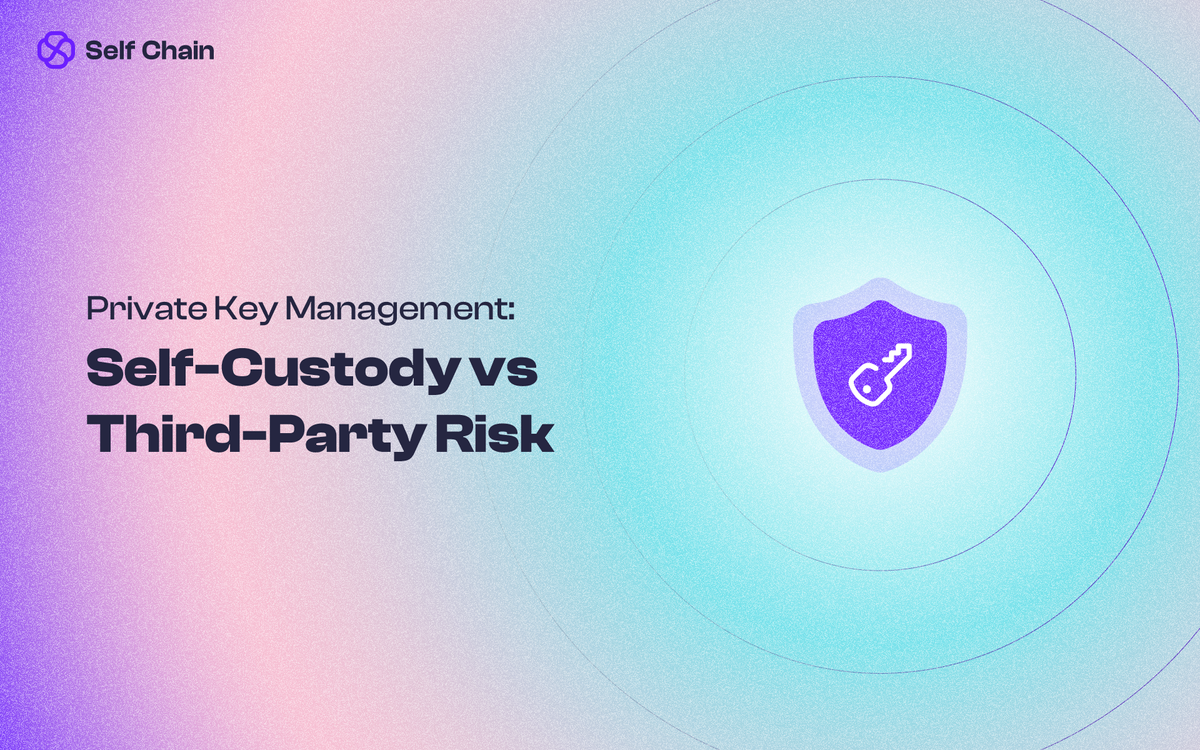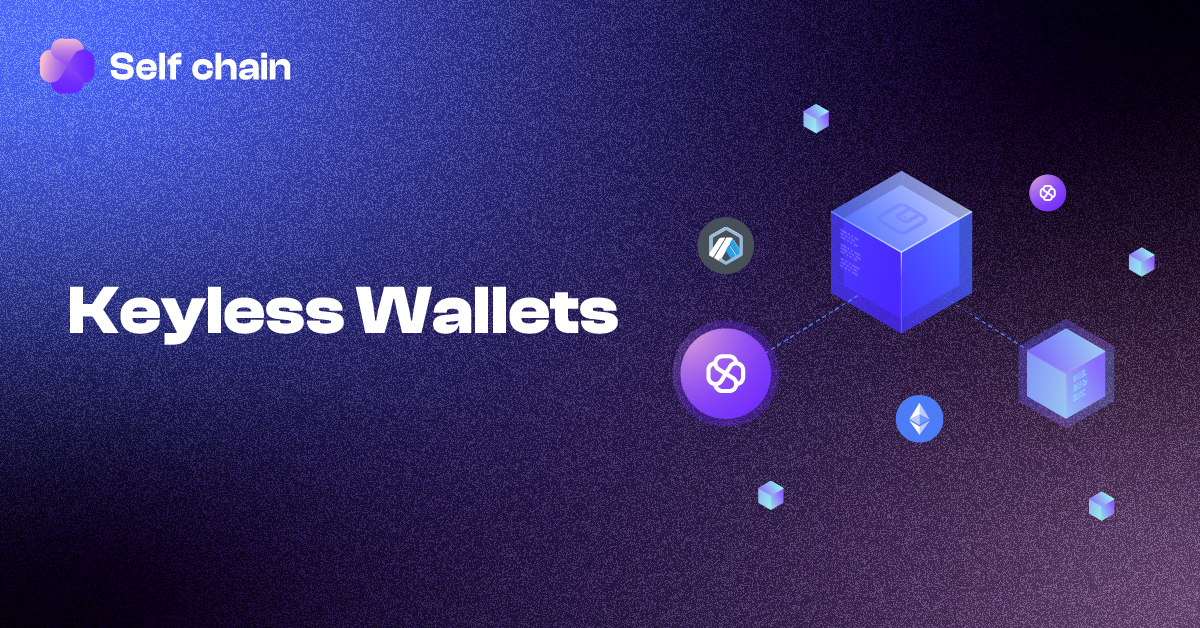Private Key Management: Self-Custody vs. Third-Party Risk
After witnessing numerous private key hacks, exploring secure keyless solutions becomes crucial for enhanced protection.

The LastPass Hack: A Cautionary Tale for Self-Custody in Crypto
LastPass, a renowned password management tool, has long been trusted by individuals and businesses to bolster online security. It simplifies life by securely storing, managing, and auto-filling passwords and personal information across devices. With features like a built-in password generator, secure sharing, and one-click form filling, LastPass has been a bridge toward a more secure, passwordless future. Its commitment to data privacy, backed by best-in-class encryption, global security certifications, and dark web monitoring, made it a comprehensive solution for safeguarding digital information.
However, recent events have cast a shadow over LastPass's reputation. Approximately $4.4 million was stolen, impacting over 80 distinct cryptocurrency addresses. At least 25 individuals were identified as victims of this breach, which is part of a larger, ongoing investigation that dates back to at least December 2022. What's particularly concerning is that most victims were long-term LastPass users who had entrusted the service with their sensitive crypto keys and seed phrases.
Common Private Key Storage Methods and Their Pitfalls
It's a common understanding that private keys should be safely stored, but many individuals are unsure about the best methods. Some opt for physical printouts or written notes, while others rely on digital password managers like LastPass. However, these methods come with their own set of drawbacks.
- Physical Storage (Paper Wallets): While offline storage is generally more secure, paper wallets can be easily lost, damaged, or stolen. They are also vulnerable to physical wear and tear over time.
- Digital Password Managers: Services like LastPass are convenient but potentially risky for storing sensitive data. Recent breaches have highlighted their vulnerability to cyberattacks, putting users' private keys and seed phrases at risk.
- Hardware Wallets: Hardware wallets, like Ledger or Trezor, are a popular choice for secure offline storage. However, they can be expensive, and if lost or damaged, accessing your funds can become challenging. Additionally, there's always a risk of counterfeit hardware wallets in circulation, which can compromise security.
- Cloud Storage: Some individuals choose to store private keys in cloud storage services like Google Drive or Dropbox. While convenient, this method introduces significant security risks. If the cloud service is compromised, your private keys could be exposed to malicious actors.
- Email: Storing private keys in email accounts is an ill-advised practice. Email accounts are common targets for hackers, and if your email is breached, your private keys are at risk. Moreover, emails can be inadvertently deleted or lost, leading to potential loss of access.
- CEX (Centralized Exchange - Custodial Wallets): Assets stored on centralized exchanges like Coinbase or Binance are custodial, meaning you don't have full control. This limits your ownership, and interacting with decentralized applications (DApps) becomes challenging, restricting your participation in the DeFi ecosystem and blockchain opportunities.
The Importance of Self-Custody
The LastPass incident underscores the importance of self-custody in the world of cryptocurrencies. While services like LastPass offer convenience, entrusting third parties with sensitive information can lead to devastating consequences, as seen in this breach. Self-custody empowers individuals with full control over their assets and keys, reducing the risks associated with centralized services and enhancing the security of their crypto holdings.
Keyless Wallets: A Secure Key Management Solution
This is where keyless wallets come into play. Keyless wallets, exemplified by Self Chain's innovative approach, revolutionize how private keys are managed. They prioritize user-centric security, ensuring that sensitive information isn't shared or stored with third parties. Instead of entrusting your private keys or seed phrases to external services, keyless wallets empower users to securely express their transaction intentions. These intentions are then executed without the need to expose private keys or seed phrases, enhancing the overall security of digital assets.
Keyless wallets, utilizing Multi-Party Computation (MPC) and Threshold Signature Scheme (TSS), employ an innovative approach to key management by splitting a random seed phrase into three shares:

- Personal Share: This share is securely stored on the user's device. It is a fundamental part of the user's key, and as it remains on the device, it's less susceptible to external threats. It acts as a user's primary access to their digital assets.
- Remote Share: This share is encrypted using the public key of the MPC Nodes network. It's a BLS threshold key that undergoes splitting via MPC across the nodes comprising the MPC network. This encrypted share is further stored within a secure module on the Self Chain. The distributed nature of this share enhances security.
- Recovery Share: The recovery share serves as a backup, meant to be used in case the user adds a new device or loses the current one. This share can be stored securely, such as in a user's secure cloud account, adding redundancy to the recovery process.
Benefits of this Key Management Approach:
- Enhanced Security: By splitting the key into three shares and distributing them, MPC and TSS provide a robust security layer. Even if one share is compromised, it's insufficient to access the assets, significantly reducing theft or compromise risks.
- Reduced Risk: The absence of a complete private key minimizes risks associated with data theft, phishing, and man-in-the-middle attacks. With only shares available, malicious actors have a much harder time accessing the key.
- Innovative Approach: Self Chain's integration of MPC and TSS offers a groundbreaking solution to traditional wallet security challenges, making it ideal for modern digital finance.
- Simplified User Experience: Users can conduct secure transactions using familiar credentials like email or biometrics, eliminating the need to manage complex private keys. This enhances user-friendliness without compromising security.
- No Single Point of Failure: The distribution of key functions eliminates central vulnerabilities. Even if one share is compromised or lost, the assets remain secure, ensuring no single point of failure in the system.
About Self Chain
Self Chain is the first Modular Intent-Centric Access Layer1 blockchain and keyless wallet infrastructure service using MPC-TSS/AA for multi-chain Web3 access. The innovative system simplifies the user experience with its intent-focused approach, using LLM to interpret user intent and discover the most efficient paths.
Self Chain ensures that onboarding and recovery are effortless with keyless wallets that grant users complete self-custody over their assets. In addition, it provides automated rewards to dApps when they efficiently resolve user intent, further enhancing the user experience. Moreover, Self Chain incorporates Account Abstraction with MPC-TSS to provide secure signing and reduce transaction fees. It's a platform that redefines blockchain interaction, making it more secure and user-friendly for everyone.
In a world where blockchain technology is becoming increasingly essential, the user experience remains a critical factor in its adoption. Intents and Keyless Wallets are set to transform the landscape, making blockchain interactions more accessible, efficient, and secure. As we move forward, the blockchain industry has the opportunity to provide users with a seamless and enjoyable experience, unlocking the full potential of this groundbreaking technology.
